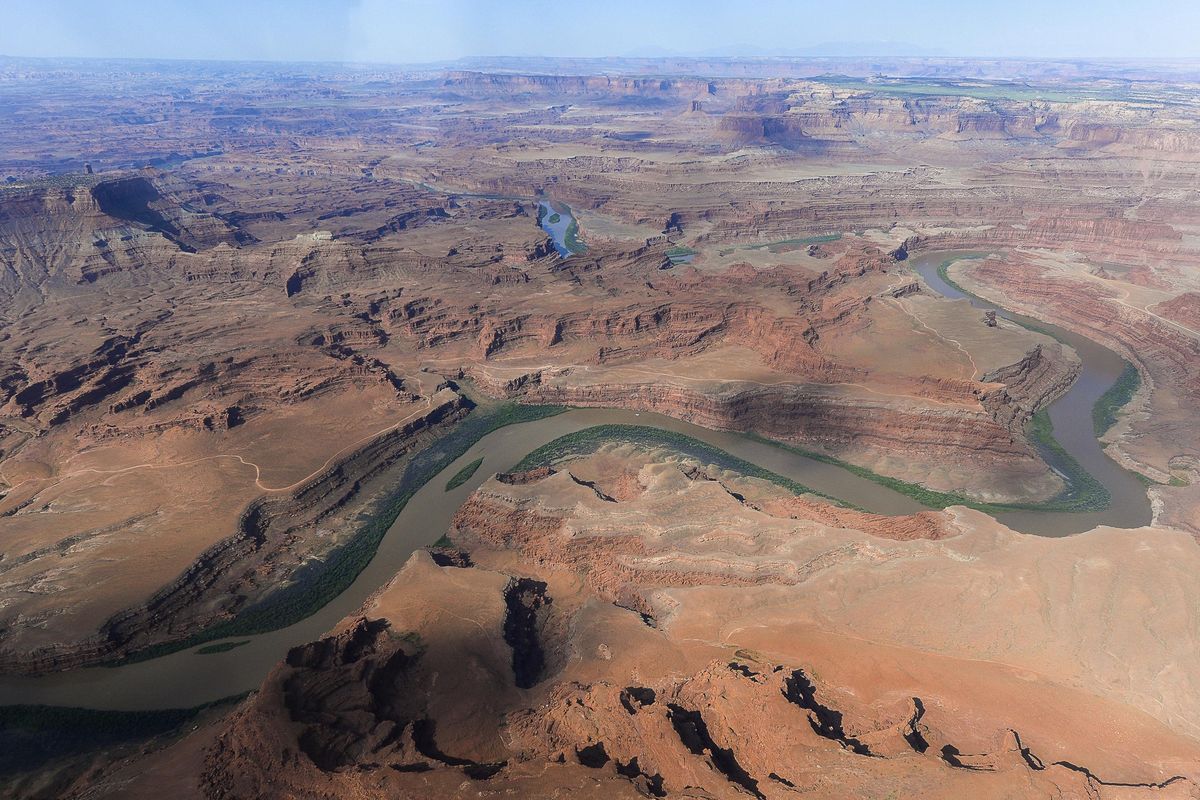U.S. interior secretary Zinke starts Utah red rocks monuments review

SALT LAKE CITY – U.S. Interior Secretary Ryan Zinke met with tribal leaders and elected officials in Utah on Sunday as he kicked off a four-day trip to the state to inspect two disputed national monuments protecting more than 3 million combined acres of the state’s red rock country.
Zinke said at a news conference that he views the trip as a listening tour to ensure everyone has a voice and to determine if the monuments fit the federal law allowing presidents to declare the protections.
About 500 protesters carrying signs and chanting “Save our monuments, stand with Bears Ears!” demonstrated on the sidewalk outside the meetings in Salt Lake City.
The re-evaluation of the new Bears Ears National Monument on sacred tribal lands and the Grand Staircase-Escalante National Monument, created in 1996, is part of an executive order signed last month by President Donald Trump calling for a review of 27 national monuments established by several former presidents.
The Bears Ears monument, a source of ire for Utah’s conservative leadership, is a priority in the review.
Zinke has been tasked with making a recommendation on the monument by June 10, about 2 1/2 months before a final report about all the monuments.
Zinke, who appeared with Utah Sen. Orrin Hatch on Sunday, said it’s possible he may not recommend the monuments be made smaller or rescinded, and he might even recommend an addition to the monument.
Past presidents have modified monuments, but no president has ever rescinded one, Zinke said. He added that “very few monuments are to the scale of recent actions, either.”
Utah Republican leaders, led by Hatch, campaigned hard to get Trump to take a second look a monument designated by President Barack Obama near the end of his term.
Hatch and others contend the monument designation is a layer of unnecessary federal control that hurts local economies by closing the area to new energy development.
Protesters on Sunday urged Zinke to listen to tribal leaders who pushed for the monument and keep the protections for vast, wild spaces.
“To go backward, it’s just a slap in the face to everybody,” said Jean Tabin, of Park City.
Zinke was scheduled to spend Sunday in Salt Lake City before traveling Monday to the southeastern corner of Utah to spend time in the Bears Ears area.
On Wednesday, he’ll be in the area near the Grand Staircase-Escalante National Monument.
Natasha Hales, the Bears Ears Inter-Tribal Coalition lead staffer, said members planned Sunday to tell Zinke about their long history with the Bears Ears land and the landscape’s sacred importance.
They also intended to reiterate that they are willing to take legal action to defend the monument if needed.
“The Utah congressional delegation is cherry-picking a few voices in opposition to this but there’s overwhelming support for this,” Hales said.
The monument review is rooted in the belief Trump and other critics that a law created by President Theodore Roosevelt to designate the monument has been improperly used to protect wide expanses of lands instead of places with particular historical or archaeological value.
Grand Staircase-Escalante is 1.9 million acres, about the size of Delaware. Bears Ears is a bit smaller at 1.3 million acres.
Zinke on Sunday spoke of his admiration for Roosevelt and said “it is undisputed the monuments have been an effective tool to save, preserve our greatest cultural treasures.” He noted that the first ever monument designation in 1906, Wyoming’s Devils Tower, was also controversial.
Conservation groups contend that the monument review puts in limbo protections on large swaths of land that are home to ancient cliff dwellings, towering sequoias, deep canyons and ocean habitats where seals, whales and sea turtles roam.
Environmental groups have vowed to file lawsuits if Trump attempts to rescind monuments, which would be unprecedented.
Congress might weigh in as well. Numerous bills on the issue were introduced in the previous session, including measures to prevent the president from establishing or expanding monuments in particular states and to require consent of Congress or state legislatures.